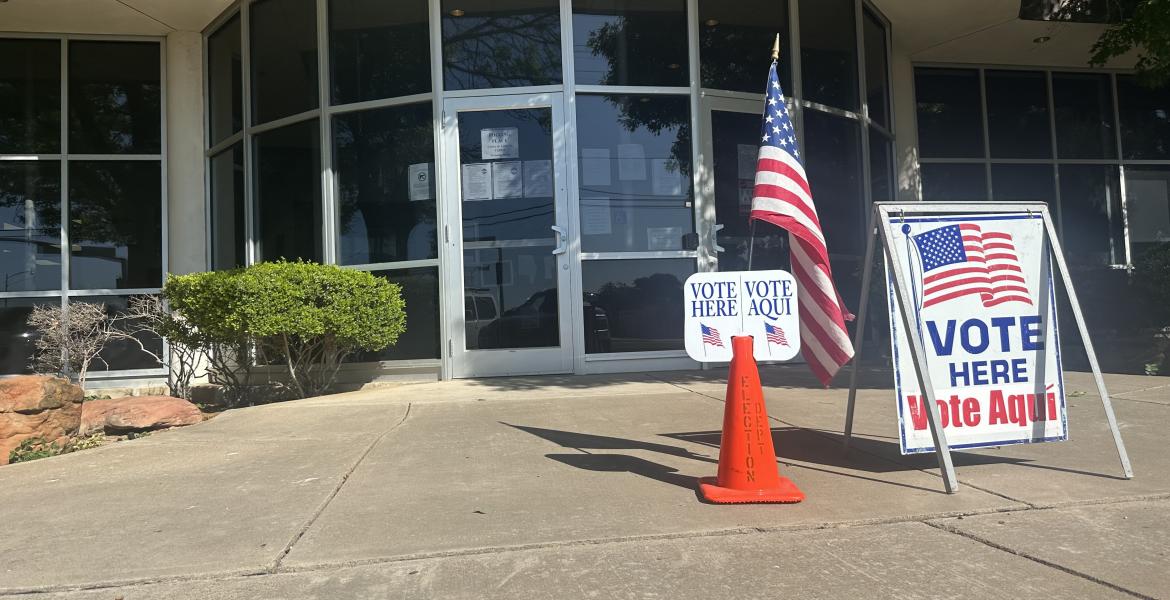No cell phones. No internet. No cable. The life of a modern-day monk is for most, a little less modern.
“We get up at three-twenty and begin morning prayer by three-forty-five,” Brother Martin Mary said.
The monks at Mount Carmel Hermitage in Christoval follow their schedule precisely. A prayer accompanies each hour that passes.
Mary said, “It’s a physical fulfillment of the Lord’s commandment. He tells his disciples to ‘stay awake.’”
The official prayers the hermits pray throughout the day are a collection of Psalms and New and Old Testament readings.
“The first monks compiled them and made them into a whole yearly cycle,” Mary said.
Currently there are five men at the hermitage. In order to become a Carmelite hermit the men must make vows of chastity, poverty, and obedience.
Throughout the day the monks spend time in prayer both in commune and in solitude.
“Those prayers in the cells are to some extent what makes us hermits—at least that is an expression of us being hermits. Praying them in the cell is the expression of our hermitage,” Mary said.
Each monk has their own cell, a small house where the hermit sleeps and takes his meals alone. Each cell includes a study, chapel, bedroom, bathroom, and porch.
“They [the cells] are separated from each other by a wall and a garden. Each one has their own yard,” Mary said.
Visitors are allowed to enter other parts of the hermitage but the enclosed area for the cells is limited to the monks.
Father Fabian Rosette established the Carmelite Hermitage in 1991. Rosette, an immigrant from Cuba, was encouraged to be a priest for the Catholic Diocese of San Angelo while studying in Belgium. After becoming a priest, Rosette spent three years in Odessa and the rest of his 10 years as a diocesan priest in San Angelo.
“I was looking for peace and union with the Lord,” Rosette said of what inspired him to become a hermit.
At the time Rosette had grown weary in the world around him and was ready to create an ‘oasis in the desert’.
“I wanted to be away from the city but I also wanted to be close to San Angelo in case anything happened to one of the brothers,” Rosette said.
He started with an empty lot of land and only dreamed of the possibilities. With the help of many different people, the hermitage began to take shape.
Mary said, “Father Fabian had to start this place from nothing. And so he had to really like move the whole world to get this place started. He had to go against the grain. He came out here by himself. He is a person that is very social, so that was very contrary to his nature to come out here by himself for three years. To physically do the stuff he did—to clear the cactus, to clear the rock, to build the places, to provide a schedule, and to live the schedule—are all things that took a lot of effort.
“For some people it seems like a lot of sacrifice, but I am happy here. This to me, this is peace,” Rosette said.
Rosette said that the hermitage offers prayer for the community regularly and invites all people to come and visit.
“The purpose was to create a community of monastic life that will work and pray and offer a place that people can come and visit,” he said.
The hermitage community sustains itself through work and the generosity of others.
During the Christmas season the monks make jellies, bake breads and other pastries in order to generate income. This year they will be selling at Christmas at Fort Concho Dec. 6 through 8. The Carmelites will also be selling at Tabor Interiors’ 10th Annual Holiday Bazaar on Dec. 14. For more information visit www.carmelitehermits.org
Subscribe to the LIVE! Daily
Required






Post a comment to this article here: